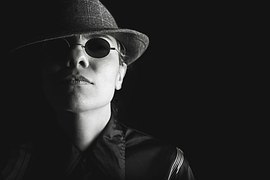 Most likely, we all know that if we are in the dealer's position and all players have folded to us, we should raise as often as possible, hoping to win the blinds. By raising from this position, you only need to make two players fold. Of course, the players in the blinds know that you will often try to steal their chips and may not trust you.
Most likely, we all know that if we are in the dealer's position and all players have folded to us, we should raise as often as possible, hoping to win the blinds. By raising from this position, you only need to make two players fold. Of course, the players in the blinds know that you will often try to steal their chips and may not trust you.
From about the middle stage of the tournament, you should expand your thinking and consider trying to “steal” not only from the dealer's position but also from the cut-off and even one position to the right (middle position). Again, your goal is to put enough pressure on all the remaining players to your left so that they fold and you win the blinds. In fact, raises from these positions will be even more respected than raises from the dealer's position.
If one of the players in the blinds calls your raise, you have a positional advantage over your opponent, which means you will act second on all streets. Being in position is a huge advantage because you see your opponent's actions first and can decide how best to play based on that. The later the stage of the tournament, the more players hesitate to get involved in hands without very strong combinations, making “stealing” from position even more effective.
Tip: What is table image? Why is it so important?
The playing style a player uses at the table is called their table image. A player who hasn't participated in many hands will have a tight image, while a player who opens many pots will have an aggressive image.
It is very important to evaluate your opponents' images because your decisions should depend on that. For example, an A-Q combination is much stronger against an aggressive player than against a tight player. The reason is simple: an aggressive player opens many pots and often won't have as strong a combination as you, but a tight player only gets involved in a hand with a very strong starting combination. As a result, against an aggressive player, a re-raise is often the best choice, but against a tight player, the correct play might be to simply fold your hand.
It is very important to think about the image you have created at the table. It is also essential to understand that not all your opponents may think of you the same way. Therefore, your decisions against one opponent or another may be different.
As a rule, you should want to play contrary to your image. If your opponent thinks you never bluff, it will be much easier to bluff them out of a pot. If your opponents see you as a maniac, you will more often get calls to your raises or even re-raises.





